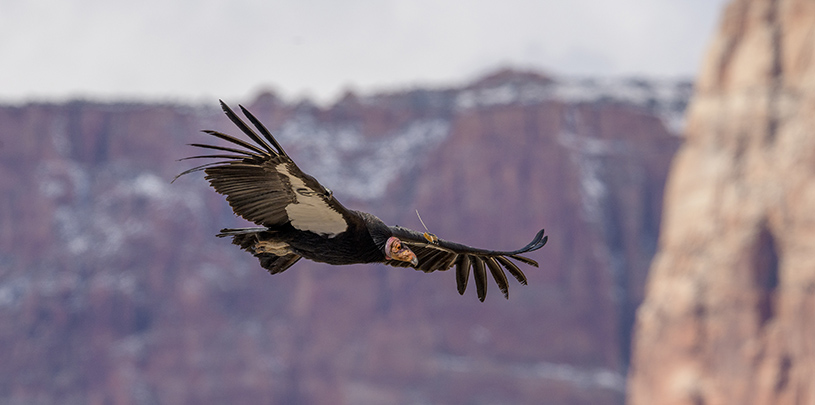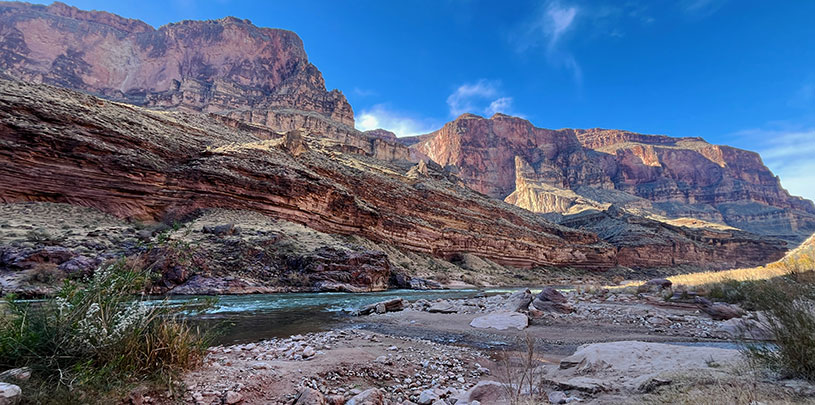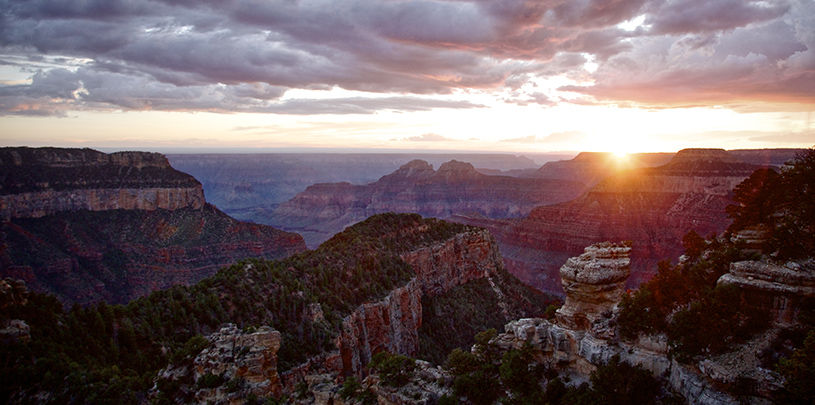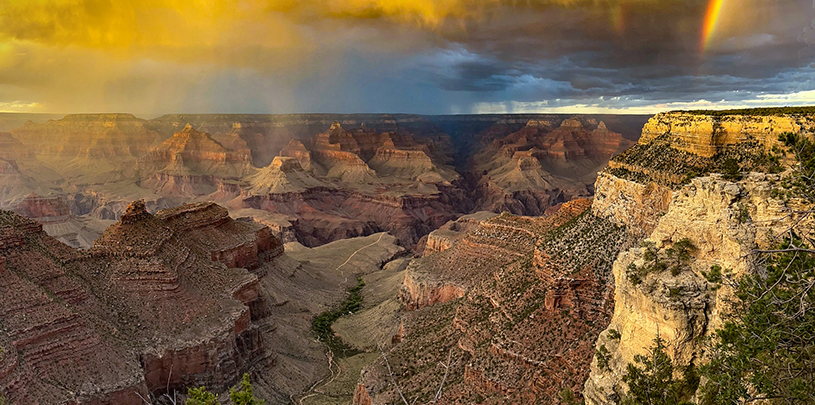
Update: President Biden designated Baaj Nwaavjo I’tah Kukveni Grand Canyon National Monument on August 8, 2023. Learn more ›
Tribal leaders are calling for a new national monument, the Baaj Nwaavjo I’tah Kukveni (“where Indigenous peoples roam, our ancestral footprints”) Grand Canyon National Monument, to protect critical water supplies, wildlife, and cultural and religious sites on about 1 million acres of their ancestral homelands outside Grand Canyon National Park. This vibrant cultural landscape is ecologically and historically important; it’s also rugged, remote, and breathtakingly beautiful. Why is it worth protecting? Let’s take a look.
Cultural and archaeological sites

Pictograph panel in the Kaibab National Forest south of the Grand Canyon in the south parcel of the proposed monument. AMY S MARTIN
Native peoples have stewarded these lands since time immemorial and their ancestral footprints in the form of petroglyphs, pictographs, rock structures, and so much more are found across the landscape, a testament to their long and continuous presence. Native farmers cultivated gardens here, artists made pottery, people wore trails and buried their loved ones. Signs of their lives and histories on these lands are everywhere.
Scientists have documented thousands of cultural resources across the proposed monument. Only a very small percentage of monument lands have been formally surveyed for the thousands more ancestral footprints to be found here. These resources are a profound link from the past to the present.
Modern Native peoples carry on their living cultural traditions here, conducting ceremonies, gathering foods like pinyon pine nuts, hunting elk and deer, and collecting medicines like sagebrush.
A monument designation would help protect this important cultural history and modern cultural and religious practices from threats like off-road vehicle use, mining, and inappropriate development.

The proposed monument lands are home to many striking natural landmarks, including sweeping vistas of Marble Canyon and the Echo and Vermilion cliffs. Many of these landmarks, including Red Butte, are integral to Native peoples’ cultural, spiritual, and religious teachings and beliefs.
The proposed monument is a spelunker’s dream, with vast networks of unmapped caves. Caves mapped in the area have revealed an incredible diversity of lifeforms uniquely adapted to the dark, cool environment, including species of beetles, spiders, and crickets as well as fossils of ancient species.
Critical water supplies

Most creeks and streams in the proposed monument only run seasonally, with runoff from snow in the high country and monsoon rains. Kanab Creek is the only creek in the proposed monument that flows year-round, and the endangered southwestern willow flycatcher and the Mexican spotted owl are just a few of the species that rely on the creek to survive.
Surrounding communities depend proposed monument’s groundwater too. The Havasupai Tribe, the Hualapai Tribe, and the town of Tusayan, Arizona rely completely on this water. With so much at stake, protecting the proposed monument’s waters from mining contamination and overpumping is critical.
Wildlife

Species large and small live on or migrate across the proposed monument, including herds of mule deer, bounding pronghorn, and majestic elk; many hunters travel to the area seasonally in pursuit. Bighorn sheep are known to climb out of the Grand Canyon onto monument lands.
In the fall, the eastern edge of the proposed monument is a superhighway for thousands of migrating birds, especially raptors, including red-tailed hawks, and endangered California condors frequently visit and travel through.
Northern leopard frogs, whose falling populations make them a species of concern in Arizona, live in the monument, and don’t forget the Houserock Valley chisel-toothed kangaroo rat, which has fur-lined cheek pouches, likes to sand bathe, and hops on its hind legs, as its name suggests.
Rare plants

The proposed monument is home to thousands of documented species of plants, many of which Native peoples continue to harvest for food, medicine, and cultural use today.
If you’re extremely lucky, you might stumble across one of two federally endangered cacti — the Brady pincushion and the Fickeisen plains — that grow here, among many other threatened plants. The Brady pincushion cactus is easy to miss, growing up to about two inches wide, like its namesake.
That’s just a quick look at some of the values worth protecting in the tribally proposed Baaj Nwaavjo I’tah Kukveni Grand Canyon National Monument.




